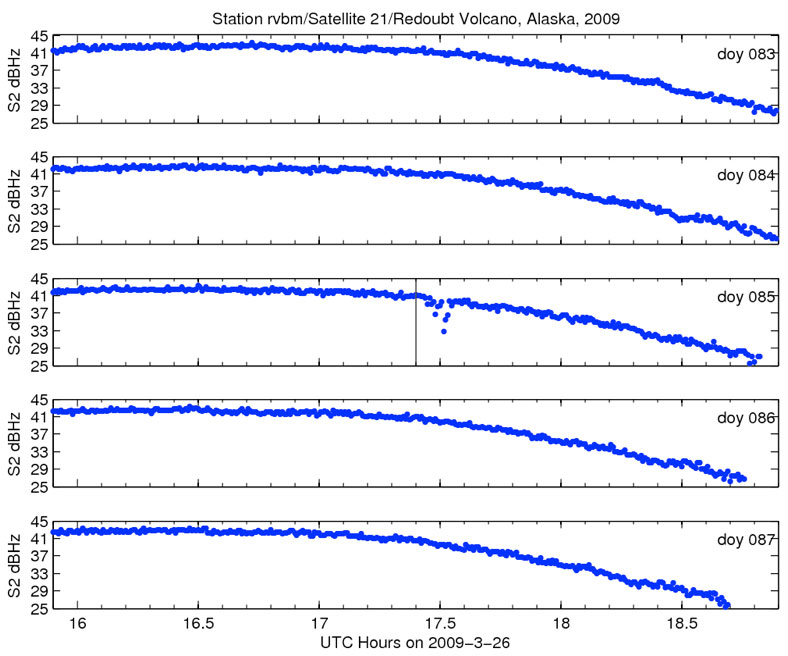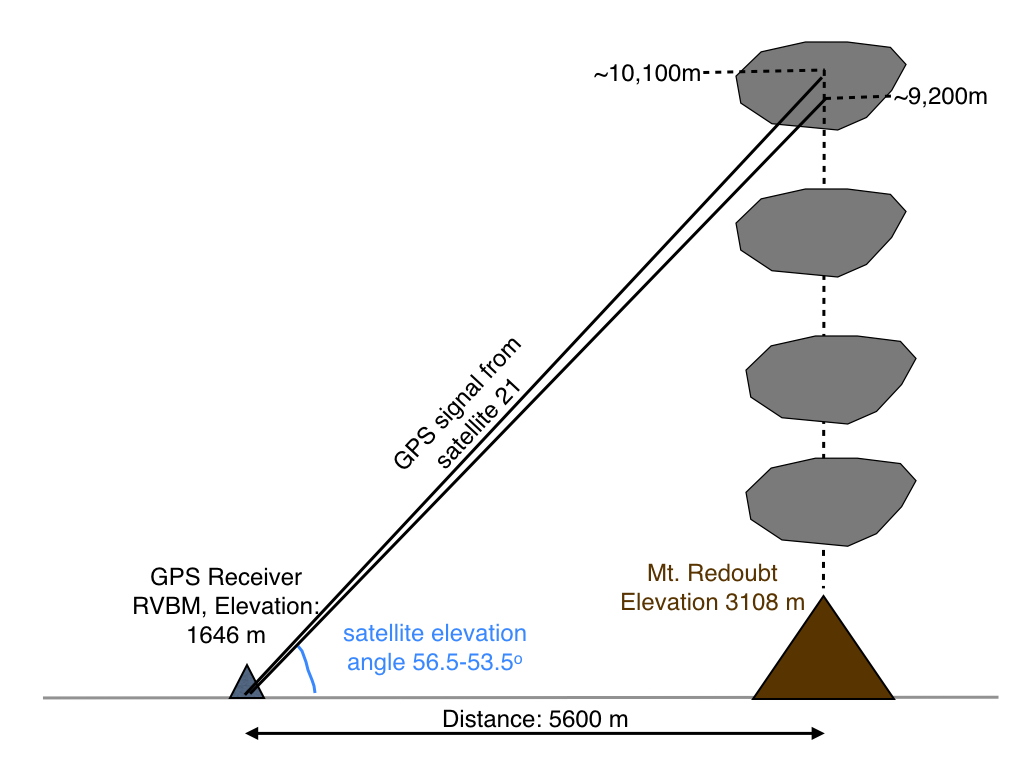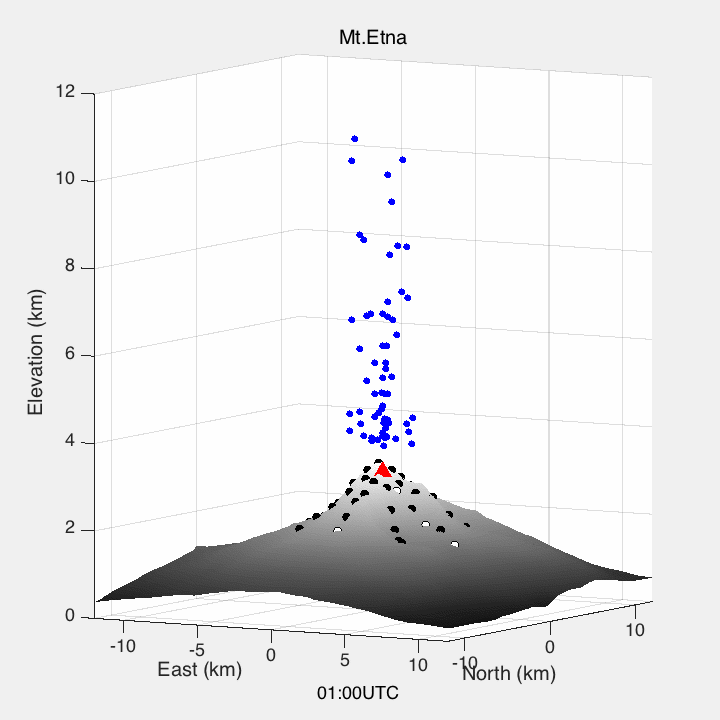
Detection of volcanic plumes, especially ash-laden ones, is important both for public health and aircraft safety. A variety of geophysical tools and satellite data are used to monitor volcanic eruptions and to predict the movement of ash. However, satellite-based methods are restricted by time of day and weather, while radars are often unavailable because of cost and portability. We have proposed to detect volcanic plumes using GPS signal strength (or signal to noise ratio, SNR) data. A proof of concept study (Larson et al., 2013) showed that multiple eruptions of Mt. Redoubt volcano in 2009 could be detected this way. The figures below provide information on this new technique. The observations are shown on the left – SNR recordings for five consecutive days. The SNR data are repeatable, except during the eruption on day of year 85. The cartoon to the right shows the geometry associated with the observations. Satellite 21 transmitted a signal received by station RVBM. On day of year 85, that signal was disrupted by a volcanic plume.

Raw SNR data for satellite 21 from a GPS receiver that was ~5 km from the volcano’s vent. The SNR data are very repeatable from day to day – and only appears to vary on the day of the eruption, day of year 85.

An illustration of the geometry we use to study the Mt Redoubt eruption. The signal transmitted from satellite 21 can only be seen at this receiver when the plume is ~10,000 meters above sea level.

A potential network of GPS sites around Mt. Etna. The animation shows the midpoint of the plume detections in blue. The plume emirates from the erupting vent (red triangle) and has a radius of 2 km. The GPS stations are shown as black (detection) or white (no detection).
The GPS receivers used to study the Mt Redoubt eruptions are fairly expensive instruments. They also have the disadvantage that often there are not very many operating near a volcano. To increase the likelihood of detecting a volcanic plume, we need to have more GPS (and GNSS) receivers around the volcano. Instead of geodetic receivers, we have proposed to use cheaper instruments specifically to detect plumes. Shown below are potential plume detections for a notional array surrounding Mt Etna.
See Larson, K.M., A New Way to Detect Volcanic Plumes, Geophys. Res. Lett.,Vol. 40(11),2657-2660, doi:10.1002/grl.50556, 2013. This work is funded by NSF EAR 1360810 and NASA NNX14AQ14G.
